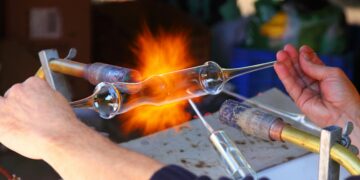In the heart of Palermo, Sicily, lies a well-preserved secret, one that has captivated historians, archaeologists, and the public for decades. The mummified body of Rosalia Lombardo, known as “The Sleeping Beauty,” has intrigued many with its almost eerily lifelike appearance. But what is the story behind this extraordinary preservation, and why does it continue to fascinate people from all corners of the world?
The Tragic Tale of Rosalia Lombardo
Rosalia Lombardo was born in 1918 in Palermo, Italy. Sadly, at the tender age of just two, she contracted pneumonia and passed away in 1920. Her grieving father, Mario Lombardo, who was an affluent and well-connected man, wanted to preserve his daughter’s memory forever. He sought the help of renowned embalmer Alfredo Salafia to preserve her body.
The mummification process that Rosalia underwent was nothing short of groundbreaking at the time. Salafia used a mix of chemicals, including formaldehyde and arsenic, which allowed for an exceptionally detailed and lifelike preservation. As a result, her body remained almost perfectly intact for over a century.
Why Is Rosalia’s Mummy So Famous?
Unlike most other mummies, Rosalia Lombardo’s body is incredibly well-preserved. She appears to be sleeping, with a serene expression on her face, and her skin maintains a soft, almost lifelike appearance. This striking preservation technique is what has earned her the nickname “The Sleeping Beauty.”
Her body is kept in the Capuchin Catacombs of Palermo, where visitors from around the world come to see her. Rosalia’s mummy stands out among the hundreds of other preserved bodies because of how well-maintained and realistic she looks, making her one of the most famous mummies in history.
The Mystery of Her Preservation
Despite the centuries that have passed, scientists are still perplexed by the level of preservation achieved by Alfredo Salafia. Unlike other mummies, Rosalia’s body does not show the typical signs of decomposition or aging. For years, experts have speculated that it was Salafia’s unique embalming technique, involving an intricate mix of chemicals and treatments, that made such an extraordinary preservation possible.
In 2009, a team of scientists even used advanced imaging techniques to further examine Rosalia’s body, hoping to unlock the secrets of her preservation. They discovered that, unlike many mummies, her body showed little sign of the typical shrinkage, disintegration, or fading that comes with time.
Theories Behind the “Sleeping Beauty” Appearance
Rosalia’s appearance continues to captivate people, and various theories have emerged to explain her incredibly lifelike look. Some speculate that the use of chemicals like formaldehyde and arsenic not only preserved her body but also contributed to a unique preservation that allowed her to appear “sleeping” rather than mummified.
Others suggest that the ambient conditions within the Capuchin Catacombs, where Rosalia’s body was placed, played a role in maintaining her appearance. The constant temperature and low humidity within the catacombs may have slowed down the natural decomposition process.
The Enduring Legacy of Rosalia Lombardo
The body of Rosalia Lombardo serves as both a poignant reminder of loss and an extraordinary example of scientific achievement. Her preservation raises questions about the limits of science, time, and memory. While it’s clear that her father’s love and grief played a significant role in bringing her to eternal rest, her mummified body remains a testament to the power of human ingenuity and the enduring fascination with the unknown.
As visitors continue to marvel at Rosalia’s lifelike appearance, the mystery of her preservation lives on, making her one of the most intriguing and haunting figures in the world of historical preservation.










































